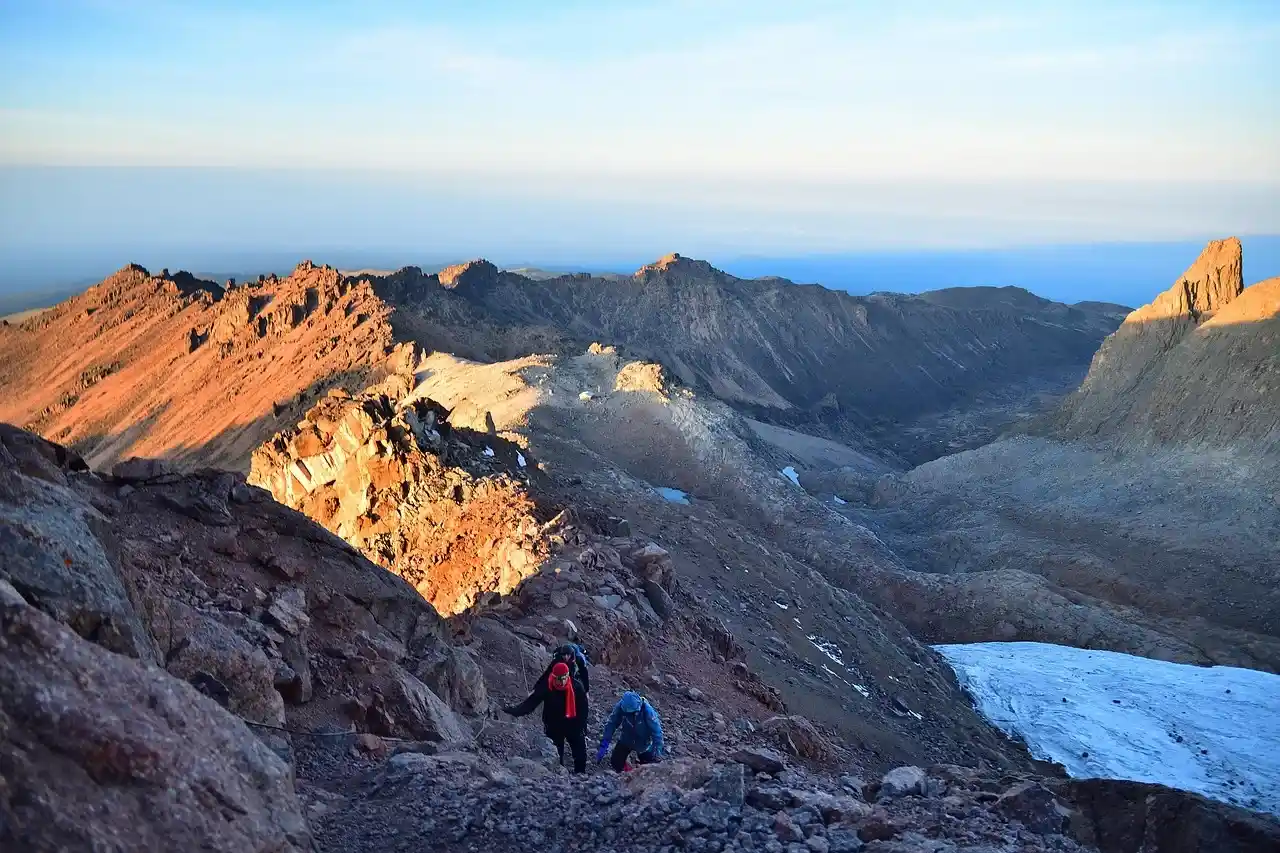Which Mountain Is Better to Climb: Mount Kenya or Kilimanjaro?
Mount Kenya and Mount Kilimanjaro are two of Africa’s most iconic mountains and top climbing destinations. While Kilimanjaro is the highest peak on the continent and draws global attention, Mount Kenya offers a quieter and more technical climbing experience with stunning alpine scenery. Choosing between the two depends on what kind of adventure you"re seeking—whether it's a high-altitude trek to a world-famous summit, or a diverse, rugged climb on Africa’s second-highest mountain. This guide explores the differences in height, difficulty, scenery, wildlife, accessibility, and overall climbing experience between Kilimanjaro and Mount Kenya to help you decide which is right for your goals.

1. Altitude and Elevation
Mount Kilimanjaro is the tallest mountain in Africa at 5,895 meters (19,341 feet), making it a major bucket-list climb. In contrast, Mount Kenya is the second-highest at 5,199 meters (17,057 feet). Kilimanjaro is significantly higher, and climbers often feel the effects of high altitude more intensely on this trek.
If you"re aiming for Africa’s tallest peak, Kilimanjaro is your mountain. However, if you prefer a slightly lower challenge with less altitude risk, Mount Kenya is a solid option.
2. Difficulty and Climbing Style
Kilimanjaro is considered a trekking peak, meaning you can reach the summit without technical climbing. Most routes are long hikes with gradual acclimatization. On the other hand, Mount Kenya has both trekking and technical climbing routes:
- Point Lenana (4,985m): Reachable via trekking (no ropes needed).
- Batian and Nelion (5,199m): Require rock climbing and technical skills with ropes and gear.
Mount Kenya appeals more to experienced climbers or adventurers looking for a mix of hiking and alpine mountaineering.
3. Scenery and Landscape
Both mountains are scenic, but in different ways:
- Kilimanjaro: Features five distinct climate zones from rainforest to alpine desert and glaciers near the summit. It’s iconic for its snow-capped peak rising above the African plains.
- Mount Kenya: Offers more rugged alpine scenery, dramatic peaks, tarns, glaciers, and fewer crowds. it's less commercial and often described as more "wild" and untouched.
For solitude and stunning alpine formations, Mount Kenya is a hidden gem. For dramatic vistas and changing landscapes, Kilimanjaro delivers a more epic, cinematic experience.
4. Wildlife and Nature
Mount Kenya National Park is known for its diverse wildlife including elephants, buffalo, colobus monkeys, and unique birdlife, especially at lower elevations. Kilimanjaro also offers wildlife in the rainforest zones, but the focus is more on the physical climb than fauna.
If spotting animals is part of your dream trek, Mount Kenya offers more opportunity, especially at forest levels.
5. Routes and Duration
Kilimanjaro has more route options with popular ones like Machame (6–7 days) , Marangu (5–6 days) , and Lemosho (7–8 days) . Mount Kenya has fewer routes, the most common being Sirimon, Naro Moru, and Chogoria, which can be done in 3–5 days for trekking to Point Lenana.
Climbers with more time might prefer Kilimanjaro’s longer routes for better acclimatization, while those on a tighter schedule may find Mount Kenya more accessible.
6. Cost and Permits
Kilimanjaro climbs tend to be more expensive due to higher park fees, mandatory guides and porters, and the overall demand. Expect to pay anywhere between $1,500 and $3,000 depending on the route and operator.
Mount Kenya is more budget-friendly, with prices often ranging from $600 to $1,200 depending on the route and logistics. Technical climbs to Batian or Nelion will cost more due to the need for professional guides and climbing gear.
7. Crowds and Popularity
Kilimanjaro is one of the most climbed mountains in the world, attracting over 35,000 trekkers annually. Expect well-developed camps, regulated routes, and larger groups.
Mount Kenya is far less visited, offering peace, solitude, and a more personal adventure. It’s ideal for those wanting to avoid tourist crowds and explore remote trails.
8. Accessibility and Travel
Kilimanjaro International Airport (JRO) serves the region, with easy access to Moshi and Arusha. Tours are well-organized with many experienced operators available.
Mount Kenya is accessible from Nairobi (Jomo Kenyatta International Airport). Climbers usually base in Nanyuki or Chogoria towns, reachable by road from Nairobi in about 3–4 hours.
9. When to Go
- Kilimanjaro: Best seasons are January–March and June–October (dry seasons).
- Mount Kenya: Best seasons are January–February and August–September.
Both mountains are climbable year-round, but conditions are safest and clearest in dry months.
10. Final Thoughts – Which Mountain Should You Climb?
- Choose Kilimanjaro if: You want to summit Africa’s highest peak, prefer trekking over technical climbing, and are excited by the idea of passing through multiple climate zones on a high-profile adventure.
- Choose Mount Kenya if: You prefer fewer crowds, alpine technical routes, lower costs, or wildlife encounters in a less commercial setting.
Whichever you choose, both Kilimanjaro and Mount Kenya offer life-changing experiences filled with natural beauty, physical challenge, and unforgettable views. At Chat on WhatsApp or jaynevytours@gmail.com, we can help you plan either climb based on your fitness level, timeline, and adventure style.
BOOKING FORM
Book your tour here
RELATED PACKAGES
- Baraka Aquarium and Nungwi Village in Zanzibar
- Diving Tour in Zanzibar
- Zanzibar Sky Diving Tour
- Dolphin Snorkeling Sandbank Tour in Zanzibar
- Horse Riding Tour in Zanzibar
- Jet Ski Tour in Zanzibar
- Jozani Forest Visiting in Zanzibar
- Quad Bike Tour in Zanzibar
- Traditional Sunset Dhow Cruise Tour in Zanzibar
- The Best Stone Town Tour in Zanzibar
- Zanzibar Butterfly Tour
MORE PACKAGES
- Mount Kilimanjaro
- Ngorongoro Crater
- Serengeti National Park
- Tarangire National Park
- Lake Manyara National Park
- Zanzibar Island
- East Africa Packages
- Tanzania Safari From Zanzibar
- Kenya packages
- Rwanda Packages
- Uganda packages
- Mikumi National Park
- Kitulo National park
- Mkomazi National park
- Selous (Nyerere National Park)
